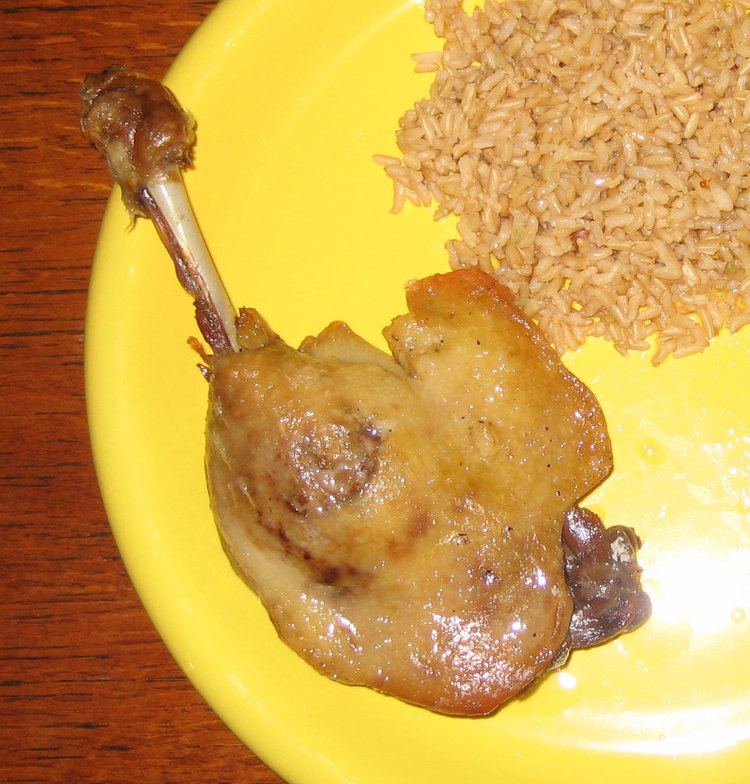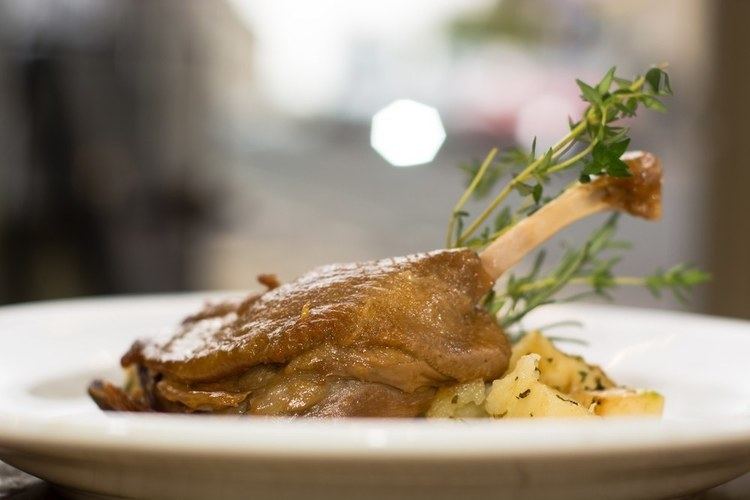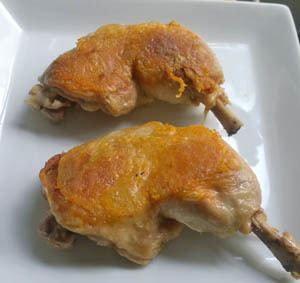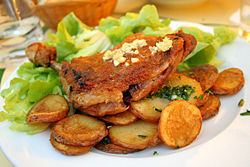 | ||
Similar Foie gras, Lemon, Terrine, Rillettes, Cassoulet | ||
Orange sauce duck confit
Confit (/kɒnfi/, [kɔ̃fi]) comes from the French word confire which means literally "to preserve," a confit being any type of food that is cooked slowly over a long period of time as a method of preservation.
Contents
- Orange sauce duck confit
- Duck confit easy professional method classic french recipe
- Etymology
- Fruit confit
- Meat confit
- History
- Condiment confit
- References

Confit as a cooking term describes when food is cooked in grease, oil or sugar water (syrup), at a lower temperature, as opposed to deep frying. While deep frying typically takes place at temperatures of 325–450 °F (163–232 °C), confit preparations are done at a much lower temperature, such as an oil temperature of around 200 °F (93 °C), sometimes even cooler. The term is usually used in modern cuisine to mean long slow cooking in oil or fat at low temperatures, many having no element of preservation such as dishes like confit potatoes.

In meat cooking, this requires the meat to be salted as part of the preservation process. After salting and cooking in the fat, sealed and stored in a cool, dark place, confit can last for several months or years. Confit is one of the oldest ways to preserve food, and is a specialty of southwestern France.

Duck confit easy professional method classic french recipe
Etymology

The word comes from the French verb confire (to preserve), which in turn comes from the Latin word (conficere), meaning "to do, to produce, to make, to prepare". The French verb was first applied in medieval times to fruits cooked and preserved in sugar.
Fruit confit
Fruit confit are candied fruit (whole fruit, or pieces thereof) preserved in sugar. The fruit must be fully infused with sugar, to its core; larger fruit take considerably longer than smaller ones to candy. Thus, while small fruit such as cherries are confits whole, it is quite rare to see whole large fruit, such as melon confits, the time and energy involved making large fruit confits quite expensive.
Meat confit
Confit of goose (confit d'oie) and duck (confit de canard) are usually prepared from the legs of the bird. The meat is salted and seasoned with herbs, and slowly cooked submerged in its own rendered fat (never to exceed 85 °C (185 °F)), in which it is then preserved by allowing it to cool and storing it in the fat. Turkey and pork may be treated in the same manner. Meat confit is a specialty of the southwest of France (Toulouse, Dordogne, etc.) and is used in dishes such as cassoulet. Confit preparations originated as a means of preserving meat without refrigeration.
In a restaurant context, confit is usually served after further preparation. Whole confit leg is baked to crisp the skin or added to a casserole type dish. Confit duck leg is used to make rillette.
History
Traditional meat for confit include both waterfowl such as goose and duck, and pork. Duck gizzards are also commonly cooked in the confit method. Varying forms of this delicacy thrive throughout southern France.
"Confit country" is the area of Occitan France where goose fat is used to cook, as opposed to olive oil which is used in Provence where olives were plentiful and thus cheap.
Confit country is divided roughly into regions where one type of meat predominates the confit preparations. Goose confit is associated with the Béarn and Basque regions with their classic specialties of cassoulet and garbure, hearty and earthy dishes of confit and beans. Saintonge and Brantôme feature duck confit, often with potatoes and truffles.
Non-waterfowl meats are frequently treated to the confit process, but they are not classically considered true confits. The French refer only to duck and goose confits as true confits; other meats poached in duck or goose fat are considered en confit ("in confit"). For example, chicken cooked in goose fat is called poulet en confit. Pork is often confit and shredded to create rillettes.
Condiment confit
Italian cooking uses a number of "condiment confits," such as onion confit, chili confit, and garlic confit.
